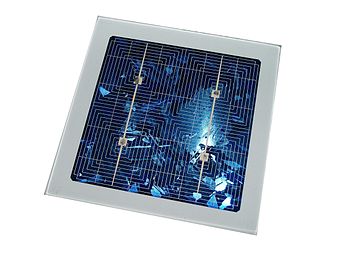Next-Generation Photovoltaic Technologies to Take Center Stage as Solar Expenditures Rebound

Advanced photovoltaic (PV) technologies such as diamond wire and n-type substrates will increasingly find their way into mainstream solar manufacturing, especially with capital expenditures set to bounce back this year, according to IHS Technology (NYSE: IHS).
In a move that will coincide with the launch of a new spending cycle within solar circles, manufacturers along the PV supply chain will transition from standardized technologies at present to next-generation mechanisms for solar-related mass production in the near future. Capital spending will reach an expected $3.4 billion by year-end, IHS believes, after bottoming out in 2013.
“Innovative technologies will be atop the agendas of major solar manufacturers globally now that supply and demand has come to closer alignment,” said Jon Campos, analyst for solar demand at IHS.
“While most experts thought that overcapacity issue would remain significantly longer, the fundamental assumptions made by IHS were that the industry would move toward market equilibrium behind increasing demand in the emerging markets, and that PV manufacturers would turn to advanced technologies to compete with traditional forms of energy production—assumptions that are now coming to fruition,” Campos added.
These findings can be found in the report, “PV Manufacturing Technology Report – World 2014,” from the Power & Energy service of IHS. The report delivers an in-depth look into the competitive landscape of the world’s leading solar manufacturing technologies, materials, and cost trends through 2020.
Wafer manufacturers to shift from steel wire to diamond wire
With the scale of the solar industry growing, new pressures on driving down costs-per-watt have become more significant. And as the solar shakeout intensified in the last 18 months, manufacturers have also been seeking alternative slicing tools.
The diamond wire market, in particular, is promising, with the shift from steel wire expected to begin this year as the economic landscape of the industry improves and capital expenditures return to the market.
While diamond wire accounted for 5.5 gigawatts (GW) of the marketplace last year, usage will grow to 27.2 GW by 2017 and to 43.1 GW of solar installed capacities by 2020, as shown in the attached figure.
N-type cells to spark growth in monocrystalline market share
Solar technology changes will also extend to p-type substrates, which have generally been the solar industry norm. However, significant research and development is being conducted on n-type silicon, shown to have a higher tolerance to common impurities and resulting in high minority carrier diffusion lengths compared to p-type. Furthermore, n-type crystalline does not suffer from the boron-oxygen-related light-induced degradation (LID) that is common on p-type Czochralski silicon.
IHS forecasts that n-type applications will mature and find their way into mainstream manufacturing. N-type will be mostly a monocrystalline technology, growing from 5 percent of total cell production capacity last year to approximately 32 percent by 2020.
CdTe to continue dominating thin-film market
With a new capex cycle due in 2014, a slight increase in spending will take place as existing suppliers add capacity. Such a development will benefit thin-film technologies after investments in new thin-film module manufacturing equipment declined in 2013 to their lowest level in five years.
The top two thin-film suppliers, First Solar (CdTe) and Solar Frontier (CIGS), represent currently dominant technologies. Both companies increased their production slightly in 2013, but have not announced any expansions in the near term.
 Alternative Energy HQ solar power for homes, wind energy, and bio fuel issues
Alternative Energy HQ solar power for homes, wind energy, and bio fuel issues


 Guides for increasing the efficiency of organic solar cells
Guides for increasing the efficiency of organic solar cells





